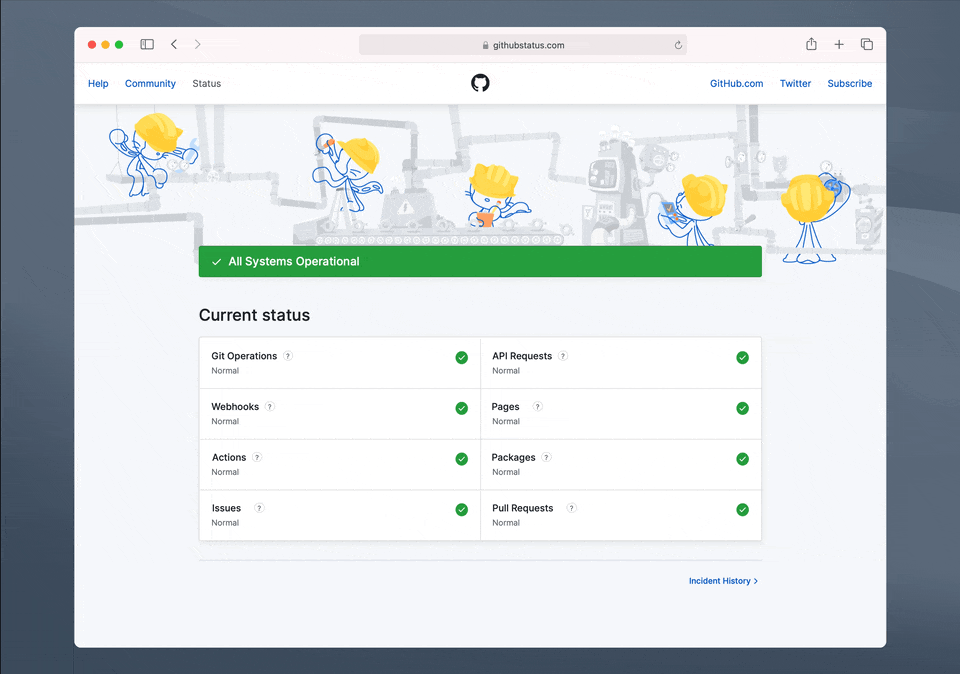GitHub Availability Report: August 2020
Introduction In August, we experienced no incidents resulting in service downtime. This month’s GitHub Availability Report will dive into updates to the GitHub Status Page and provide follow-up details on…

Introduction
In August, we experienced no incidents resulting in service downtime. This month’s GitHub Availability Report will dive into updates to the GitHub Status Page and provide follow-up details on how we’ve addressed the incident mentioned in July’s report.
Status page refresh
At GitHub, we are always striving to be more transparent and clear with our users. We know our customers trust us to communicate the current availability of our services and we are now making that more clear for everyone to see. Previously, our status page shared a 90-day history of GitHub’s availability by service, but this history can distract users from what’s happening actively, which during an incident is the most important piece of information. Starting today, the status page will display our current availability and inform users of any degradation in service with real-time updates from the team. The history view will continue to be available and can be found under the “incident history” link. As a reminder, if you want to receive updates on any status changes, you can subscribe to get notifications whenever GitHub creates, updates, or resolves an incident.
Check out the new GitHub Status Page.

Follow up to July 13 08:18 UTC
Since the incident mentioned in July’s GitHub Availability Report, we’ve worked on a number of improvements to both our deployment tooling and to the way we configure our Kubernetes deployments, with the goal of improving the reliability posture of our systems.
First, we audited all the Kubernetes deployments used in production to remove all usages of the ImagePullPolicy of Always configuration.
Our philosophy when dealing with Kubernetes configuration is to make it easy for internal users to ship their code to production while continuing to follow best practices. For this reason, we implemented a change that automatically replaces the ImagePullPolicy of Always setting in all our Kubernetes-deployed applications, while still allowing experienced users with particular needs to opt out of this automation.
Second, we implemented a mechanism equivalent to the one of Kubernetes mutating admission controllers that we use to inject the latest version of sidecar containers, identified by the SHA256 digest of the image.
These changes allowed us to remove the strong coupling between Kubernetes Pods and the availability of our Docker registry in case of container restarts. We have more improvements in the pipeline that will help further increase the resilience of our Kubernetes deployments and we plan to share more information about those in the future.
In Summary
We’re excited to be able to share these updates with you and look forward to future updates as we continue our efforts in making GitHub more resilient every day.
Tags:
Written by
Related posts

We need a European Sovereign Tech Fund
Open source software is critical infrastructure, but it’s underfunded. With a new feasibility study, GitHub’s developer policy team is building a coalition of policymakers and industry to close the maintenance funding gap.

GitHub Availability Report: June 2025
In June, we experienced three incidents that resulted in degraded performance across GitHub services.

From pair to peer programmer: Our vision for agentic workflows in GitHub Copilot
AI agents in GitHub Copilot don’t just assist developers but actively solve problems through multi-step reasoning and execution. Here’s what that means.